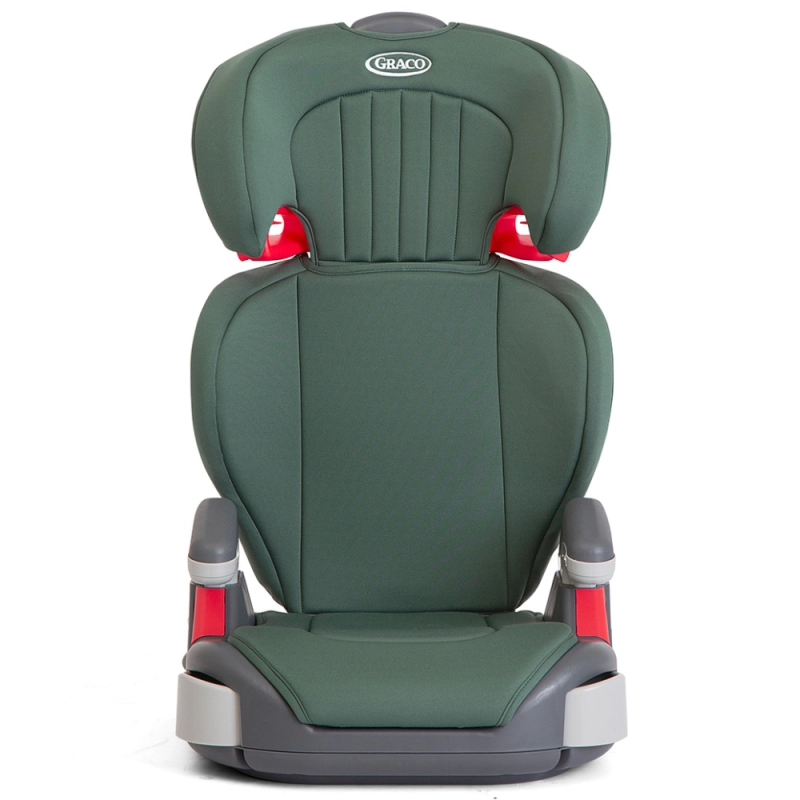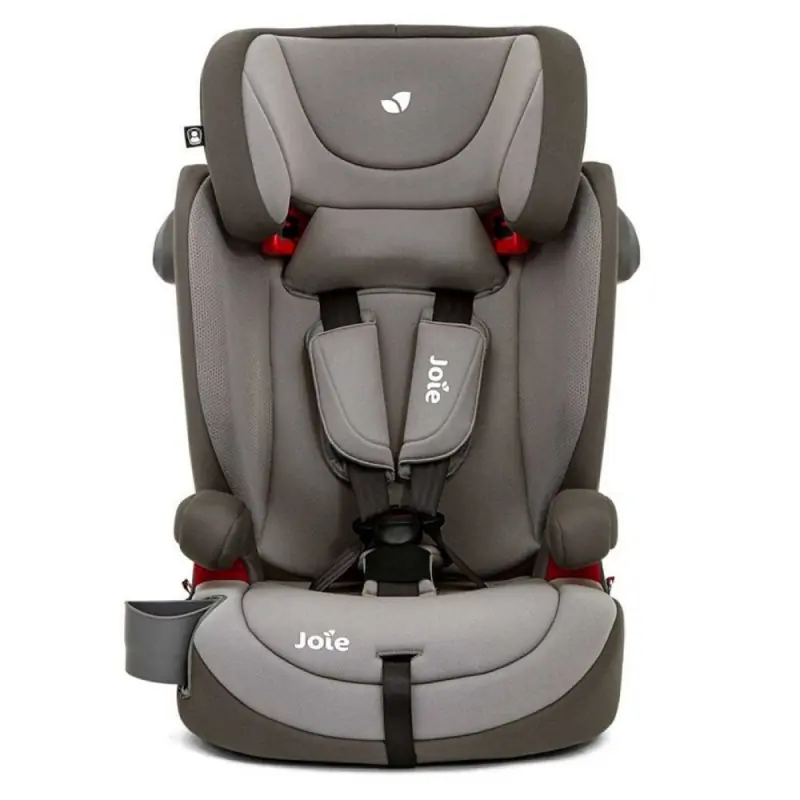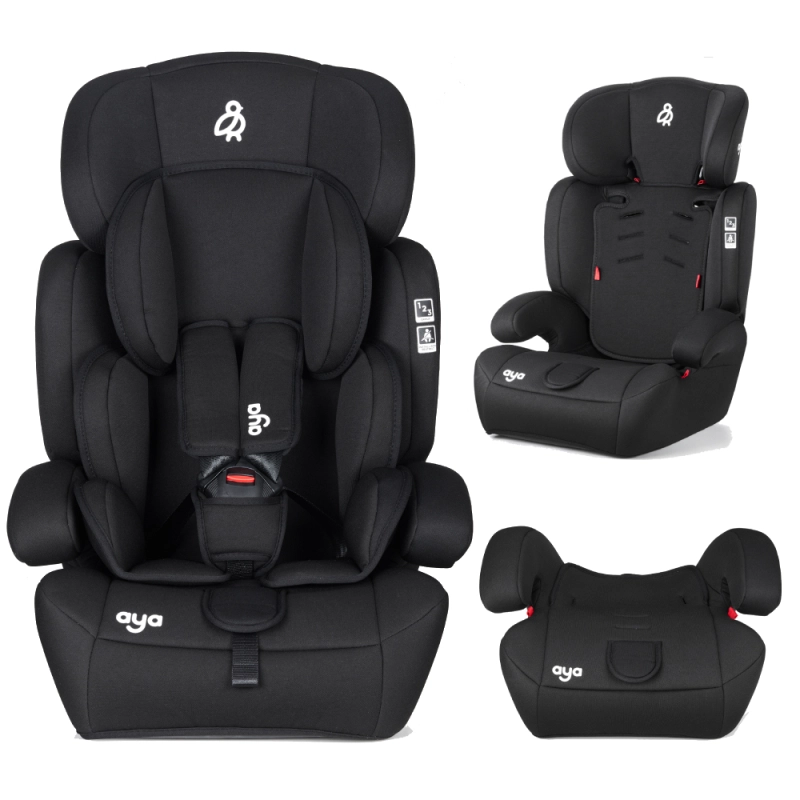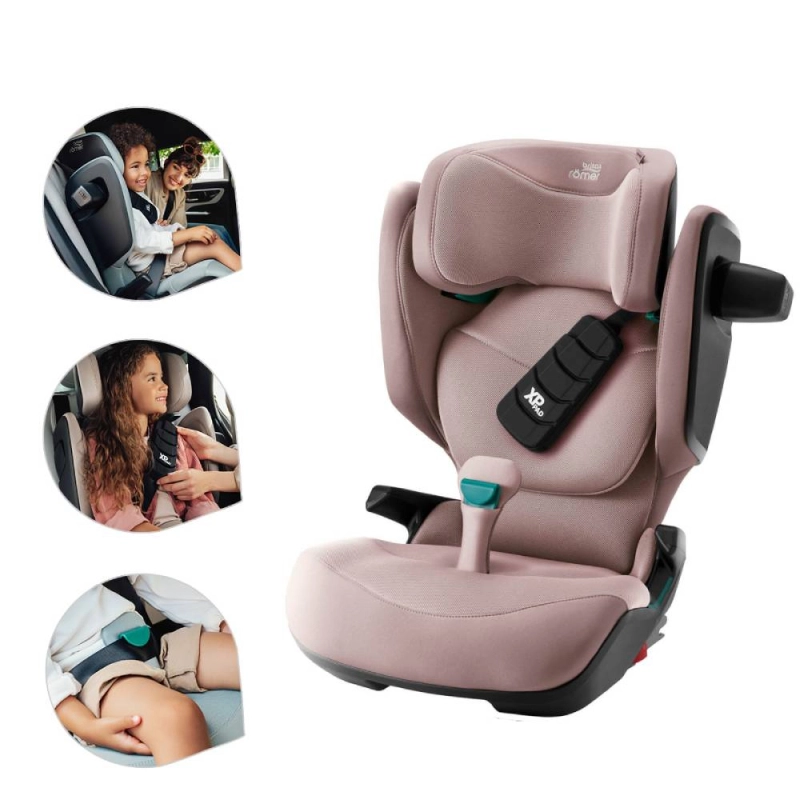-
 Pushchairs
Pushchairs - Pushchairs
- Shop By Type
 Car Seats
Car Seats - Car Seats by Group
 Nursery
Nursery - Nursery
- First Bed
- Bedroom Furniture
- Room Accessories
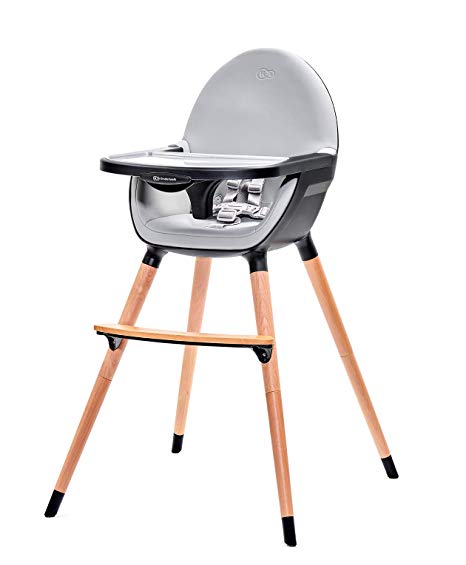 Feeding
Feeding - Feeding
- Highchairs & Boosters Seats
- Weaning
 Care
Care - Care
- Safety
- Showroom Appointments Book Now
- Free Delivery & 365 Day Returns
- Lowest Prices Checked Daily
- Over 1 Million Customers Served
Child Car Seats (4yrs-12yrs)
Buying a new car seat for each phase of your little one’s growth can be pricey – but lucky for you group 1/2/3 (multi-stage) car seats save the day. Car seats in this group are forward facing, and are suitable for children weighing between 9kg to 36kg, or are 135cm tall (approx. 9 months to 12 years old). Don’t forget though – many combination seats have a ISOFIX fitting to a vehicle, so before you buy, make sure it’s been approved by the manufacturer for use in your car.
At the start of your teeny tot’s life, you can buckle them in with a five-point safety harness. And as they grow up, these carriers are designed to convert into a high-backed booster seat. At this stage, the harness can be removed to create a group 2/3 seat, and your not so little one can be fastened in with a grown-up seatbelt!
If you need more clarification on the laws surrounding child car seats, we’ve created a handy guide which explains all the car seat regulations you need to know.
Child car seats in group 2/3 are high-backed booster seats which have been made to fit children who weigh between 15kg to 36kg (approximately 4 to 12 years old). These type of car seats are often secured using the vehicle’s seat belt rather than a built-in harness – so your not-so-little one can feel all grown up! You can explore our wide selection of styles from the likes of brands such as Maxi Cosi and Cybex, with peace of mind that your child is fully supported on adventures in the car.
The safety of your cherub is our number one priority at Kiddies Kingdom, and that’s why we’ve gone above and beyond when it comes to protecting your child. Most of our group 2/3 car seats have deep, padded side wings so that your precious angel’s head and torso get the maximum support they need. Some of our car seats in this group also come with handy additional features, like adjustable headrests and armrests. What more could you want?
If you’ve got a bossy mini adult on your hands, you’ll know the struggle of getting them into their old car seat. This calls for venturing into the slightly more mature world of booster seats! Group 3 carriers (approx. for 6- to 11-year-olds) are a safe and comfortable way, for your child to tour on wheels. By law, backless booster seats are only suitable for little ones between 22kg to 36kg, and taller than 125cm. With this new-found freedom in the car, your child will jump at the chance to go road tripping, in their grown-up car seat!
Comfort is key, so take a look at picking a booster seat with an ergonomic base, to keep your little smiling on long car journeys.
Refine- Joie
Joie Trillo Group 2/3 Car Seat - Ember (Exclusive to Kiddies Kingdom)
EXCLUSIVE TO KIDDIES KINGDOM
Offer 46%
37 Reviews£34.99 RRP: £65.00Add to Basket - Britax
Britax Kidfix i-Size Group 2/3 High Back Booster Car Seat - Cosmos Black
USE CODE EXTRA5 TO GET 5% OFF!
Offer 29%
53 Reviews£142.00 RRP: £199.00View Bundle - Britax
Britax Kidfix i-Size Group 2/3 High Back Booster Car Seat - Storm Grey
USE CODE EXTRA5 TO GET 5% OFF!
Offer 29%
30 Reviews£142.00 RRP: £199.00Add to Basket - 6 Reviews£79.00 RRP: £85.00Add to Basket
- Joie
Joie Elevate Group 1/2/3 High Back Booster Car Seat - Cherry (Exclusive To Kiddies Kingdom)
Offer 38%
21 Reviews£49.99 RRP: £80.00Add to Basket - Graco
Graco Junior Maxi R44 Group 2/3 Car Seat - Hunter (Exclusive to Kiddies Kingdom)
USE CODE EXCLUSIVE10 FOR A FURTHER 10% OFF!
Offer 38%
17 Reviews£27.99 RRP: £45.00Add to Basket - 5 Reviews£49.99 RRP: £60.00Add to Basket
- 6 Reviews£90.00 RRP: £90.00Add to Basket
- 51 Reviews£146.99 RRP: £209.99Add to Basket
- Graco
Graco Junior Maxi R44 Group 2/3 Car Seat - Fossil (Exclusive to Kiddies Kingdom)
USE CODE EXCLUSIVE10 FOR A FURTHER 10% OFF!
Offer 44%
5 Reviews£24.99 RRP: £45.00Add to Basket - Aya
Aya Comfort Group 1/2/3 Car Seat - Midnight Black
3 in 1 Seat | 9m to 12 years | Adjustable Headrest
Offer 44%
9 Reviews£49.99 RRP: £89.99Out of Stock - Aya
Aya Comfort Group 1/2/3 Car Seat - Sage Green
3 in 1 Seat | 9m to 12 years | Adjustable Headrest
Offer 44%
6 Reviews£49.95 RRP: £89.99Out of Stock - 55 Reviews£146.99 RRP: £209.99Add to Basket
- Britax
Britax Kidfix I-Size Pro STYLE Group 2/3 High Back Booster Car Seat - Dusty Rose
USE CODE BABY10 TO GET 10% OFF!
Offer 17%
1 Review£149.00 RRP: £179.00View Bundle - 1 Review£16.99 RRP: £17.99Add to Basket
- 8 Reviews£199.95 RRP: £199.95Add to Basket
- Aya
Aya Comfort Group 1/2/3 Car Seat - Dusty Pink
3 in 1 Seat | 9m to 12 years | Adjustable Headrest
Offer 44%
3 Reviews£49.95 RRP: £89.99Add to Basket - 4 Reviews£174.95 RRP: £174.95Add to Basket
- 2 Reviews£109.00 RRP: £139.00Add to Basket
- 51 Reviews£146.99 RRP: £209.99Add to Basket
Frequently Asked Questions
Why Do Children Aged Between 6 and 11 Have to Still Use a Car Seat?
In the UK, it is legal for children to use a car seat until they are 12 years old or 135cm tall. This is because they are not deemed physically or mentally mature enough to remain safe in a vehicle until either of these points. Even though a smaller or younger child may be perfectly fine sitting in a normal seat using a seatbelt, it is extremely unlikely that the vehicle's safety features will be effective for them in the event of an accident.
Ensuring a car seat supports them means features such as airbags and seat belts enable them to do their job properly for safe travel.
How Can Car Seats Safely Accommodate Children Aged Between 9m - 11yrs?
Car seats are essential safety accessories with a duty of care to keep children safe while travelling. These important products often needed to be swapped out frequently to reflect children's rapid growth stages. This is no longer a concern when selecting a 9m - 11yrs car seat as the product is designed to move and adjust as the child develops.
These car seats are fully adjustable, allowing different sizing needs to be accommodated. From lifting the headrest as a child gets taller to widening the harness for widening bodies, all aspects of these seats can be modified.
What Type of Car Seats Are Ideal for Children Aged Between 4 - 11 Yrs?
Even when your child gets older and demonstrates their independence more, finding the right car seat for them is still essential. Our collection of products for ages 4 to 11 encompasses all of the safety aspects that car seats need to encompass. Furthermore, they offer extreme adjustability, allowing growing children to always have a seat that meets their needs perfectly.
For children of these ages, you can select between a traditional car seat, high-backed booster or regular booster seat, depending on their height and weight. With seats designed to mimic the design and comfort of a regular car seat, your children can still exert their independence whilst you can guarantee protection from travel risks.
What Features Should I Look For When Choosing a Car Seat for Children Aged Between 6 to 11?
Growing children may not always be best pleased with the thought of using a car seat, so we think three components are essential to get right: design, comfort and adjustability.
Design is vital as it ensures that children don't feel like sitting in a car seat intended for someone younger than them. Whether you choose a sleek leather option or a trendy fabric design, we guarantee growing children will not have any issues using the seats.
Comfort is important to get right also. It's ideal for you to select seats that offer padded liners so that the robust frame of a car seat never restricts a growing child. Finally, the selling point of these seats is that they can adjust easily to accommodate a growing child. Moving the headrest, armrests and harness points can create the ideal car seat for a developing child.
What Are the Benefits of Choosing Car Seats for 9m - 11yrs?
Purchasing the right accessories for a child can cost a pretty penny, so these seats are a brilliant investment. Instead of changing the car seat as a child moves through each of the four groups of sizes and heights, you can simply adjust the existing model to meet their needs.
Another benefit is that these seats are designed to be ergonomic and lightweight, making them easy to remove and install. This is particularly helpful when transporting younger children to and from a vehicle or when moving a car seat for an older child between cars.
Additionally, children are more likely to be relaxed during travel as they will be 100% used to their car seat. Finally, choosing a 9m - 11 yrs car seat can enhance safety. This is because the product is designed to be easily adjusted, meaning you can pay closer attention to your child's needs. By making minor changes with every growth, seats can be guaranteed to fit correctly, resulting in reliable protection.
Does a Child Aged Between 4 - 11 Yrs Always Need a Car Seat?
Yes, even though your child may start to resemble a teenager before their time, as long as they are either younger than 12 years old or shorter than 135cm (whichever comes first), they must use a car seat. This is important for two reasons: the ability to physically use a car’s safety features and the mental maturity to understand how to remain protected in a vehicle.
How Can I Ensure a 6 to 11 Years Car Seat Is Safe for My Child to Use?
As long as a car seat can be adjusted to meet your child's current height and weight, it is safe to use for travel. In the UK, it's also a legal requirement for all seats to be i-Size tested. This means your product should feature an 'E' marking to demonstrate its compliance. Finally, you should only ever install a car seat in the rear of a vehicle to ensure safety.
How Can I Check That My 9m - 11yrs Car Seat Is in the Correct Position?
By paying close attention to features such as the position of the shoulder rests, ensuring that the headrest is cushioning the back of the head and that the harness covers the body correctly, you can check if the car seat's current position is ideal for your child.
Can a 4 - 11 Yrs Car Seat Be Installed in the Front of the Car?
While we advocate for utilising car seats in the rear of the vehicle, there may be instances where employing the front seat becomes necessary, particularly when accommodating more than three children in a car.
Using the front seat is permissible, but it's essential to refer to your car manual for specific instructions, particularly concerning the airbag.
Bear in mind that if a rear-facing car seat is utilised in the front seat, the airbag must be deactivated to ensure safety.
How Do I Install a Car Seat?
The installation instructions will depend on the product you have selected. However, generally speaking car seats should be fitted using either an Isofix or i-Size base. Once that is fitted, the car seat can be simply attached and removed as needed.
Click this link to find out more details on how to fit a car seat correctly.
What Are the Laws Relating to Children Travelling in 9m - 11yrs Car Seats?
Children up to 15 months of age should be rear-facing. Once over this age, it’s up to the parent to decide on their preference by positioning. Further laws state that car seats must only be used in the back of the vehicle and that all UK seats must comply with European testing laws. This information will be readily available when shopping for a car seat, but you can also look for the ‘E’ marking on the product to ensure it’s officially recognised. Any seats without this marking are not legal in the UK.
How Can I Ensure My 4 - 11 Yrs Car Seat Is Suitable for My Child’s Current Height and Weight?
This can be achieved in a couple of ways.
Firstly, when you select a car seat to purchase, full information will be provided on users' intended height and weight. For models ideal for children between 4 and 11 years, this will be a broad range to account for the growth expected during this period.
Knowing that the seat is technically made to accommodate a child's current size is important, but so is checking how it currently fits them. By paying close attention to the position of the headrest, seat belt positioning and where their knees bend, you can understand how effective the car seat will be in providing protection. Children should always be properly aligned with the safety features to ensure legal compliance.
How Do I Maintain a Car Seat to Remain in Good Condition for a Growing Child?
You should always look for signs of wear or damage as this could mean that the current adjustable settings are not correct. Furthermore, by keeping the seat clean and out of permanent sun exposure, it will last for longer.
Do 9m - 11yrs Car Seats Offer Both Rear and Forward-Facing Positions?
Yes, they do! As previously mentioned, rear-facing installation is legal until a child reaches 15 months. However, it is recommended as the safest way to travel for all ages of children. The versatility of these car seats means they can be properly installed in both positions.
How Do I Install a Car Seat?
Fitting a car seat is not as intimidating as you may expect. Not only will you be provided with instructions, you can also seek help from our team if needed.
Functional cookies are strictly necessary to provide the services of the shop, as well as for its proper functioning, so it is not possible to refuse their use. They allow the user to browse through our website and use the different options or services that exist on it.These are cookies that collect information about the advertisements shown to users of the website. They can be anonymous, if they only collect information about the advertising spaces shown without identifying the user, or personalised, if they collect personal information about the user of the shop by a third party, for the personalisation of these advertising spaces.Collect information about the user's browsing experience in the shop, usually anonymously, although sometimes they also allow the user to be uniquely and unequivocally identified in order to obtain reports on the user's interests in the products or services offered by the shop.These are used to improve the browsing experience and optimize the operation of the shop.These are cookies without a clear purpose or those that we are still in the process of classifying.This website uses its own and third-party cookies to improve our services and show you advertising related to your preferences by analyzing your browsing habits. To give your consent to its use, press the Accept button.


















